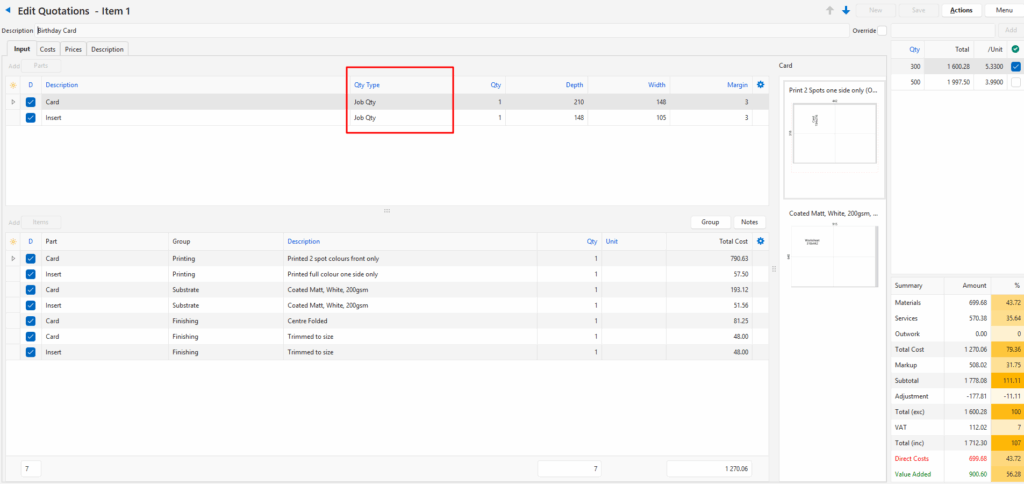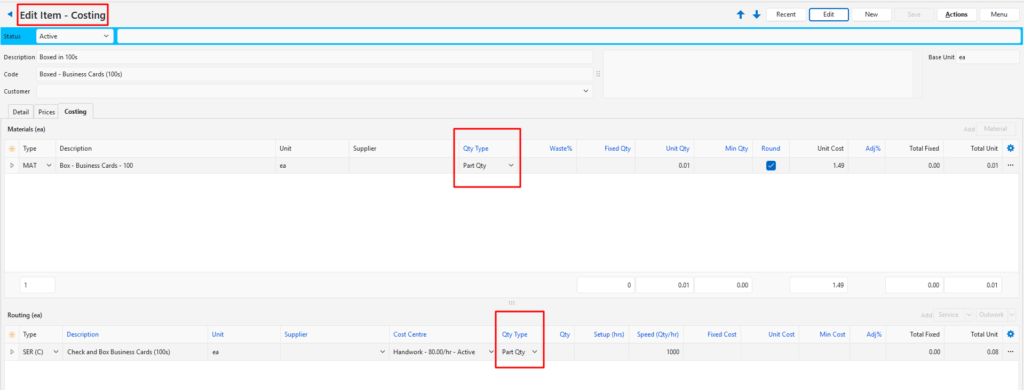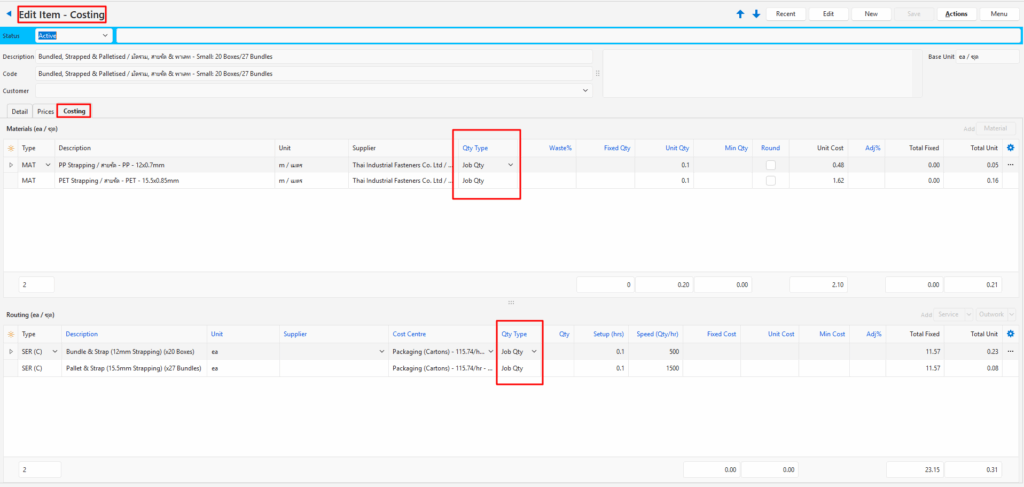- Home
- Knowledge Base
- Estimating
- Quantity Types Explained
Quantity Types Explained
It is vital that the correct Quantity Type is chosen for Costings and Estimates.
This page explains the various Quantity Types and how they are used in calculations.
| Quantity Type | Description |
|---|---|
| Fixed Qty | The Costing Quantity is Fixed, regardless of the Job, Estimate, or Part Quantities. The Quantity (Qty) is multiplied by the Unit Quantity (Unit Qty). Any Quantity in the Fixed Qty field is added to the Quantity to determine the Total Quantity. If the Total Quantity is less than the Minimum Quantity, it is replaced with the Minimum Quantity. |
| Job Qty | The Costing Quantity is Fixed, regardless of the Job, Estimate, or Part Quantities. The Quantity (Qty) is multiplied by the Unit Quantity (Unit Qty). Any Quantity in the Fixed Qty field is added to the Quantity to determine the Total Quantity. If the Total Quantity is less than the Minimum Quantity, it is replaced with the Minimum Quantity. |
| Part Qty | The Costing Quantity is multiplied by the Part and Job Quantities. This Quantity Type sums all the Part Quantities if it is used on a Service or Material that is not linked to a Part. |
| Part Area (sq.m) | The Costing Quantity is multiplied by the Job Quantity, Part Quantity, and the Part Area Square Metre. It is used for items such as ink that covers a specific area. Calculation = Part Area + Margin x Part Qty (depends on Part Qty Type). |
| Part WS Qty | The Costing Quantity is multiplied by the Worksheet Quantity and should not be used for Reels. Calculation = Part Qty / Qty Up (Linked Print Imposition) and is Rounded Up. |
| Part WS Area (sq.m) | The Costing calculates the Total Area of the Worksheets in square metres. It is calculated from the Print Imposition. |
| Part WS Length | The Costing calculates the Total Length of Worksheets and should not be used for Sheets. It takes the Part Quantity and multiplies it by the Depth. Calculation = Worksheet Depth x Worksheet Quantity. |
| Part Edge (m) | Calculates the Edge of the Part. It is typically used for seams or rims. |
| Job Weight (km) | Uses the Job Weight as the Estimate quantity. Only applies to Substrates. |
Examples of Quantity Types in Use



